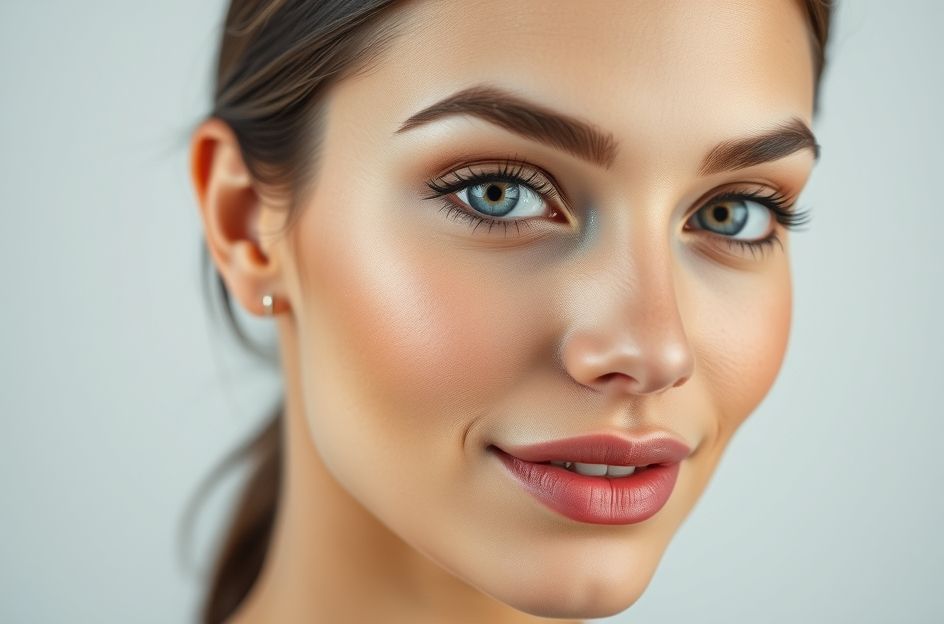Camouflage makeup is designed to disguise skin imperfections so seamlessly that they appear a natural part of your appearance. Advanced formulas effectively conceal everything from minor blemishes to major discolorations, providing a flawless yet natural look. This technology offers convenient coverage for both face and body, often eliminating the need for setting powder.
Application techniques have evolved to be user-friendly, catering to individuals who may not typically wear makeup but require coverage for skin flaws. Dermatologists, plastic surgeons, and skincare professionals recommend camouflage cosmetics with these key qualities:
* Clinically Tested
* Allergy Tested
* Fragrance-Free
* Non-Comedogenic
* Opaque Coverage
* Long-Lasting
* Waterproof
* Non-Greasy
* Smudge-Resistant
* Suitable for All Skin Types
* Natural Shade Selection
* Easy Application
* Blendable
Camouflage therapy serves as a valuable complement to medical treatments, empowering individuals to address their skin concerns. Skin problems can range from pigmentation issues to post-operative trauma and skin diseases. Versatile camouflage makeup can conceal various imperfections, including birthmarks, post-laser redness, surgical discolorations, chemical peel effects, bruising, hypo- and hyperpigmentation, vitiligo, rosacea, lupus, melasma, dark eye circles, broken capillaries, cleft and craniofacial conditions, acne blemishes, psoriasis, sun spots, age spots, brown spots, varicose and spider veins, surface scars, uneven skin tone, fine lines, wrinkles, freckles, and tattoos.
Corrective cosmetics should include detailed, easy-to-follow instructions, enabling users to master application techniques at home. Ideally, support services should be accessible through a toll-free number or a dedicated website.
In today’s appearance-conscious society, camouflage makeup is gaining popularity as a practical solution. According to Board Certified Dermatologist Steven D. Shapiro, cosmetic cover-ups are desirable options for minimizing emotional distress caused by skin disfigurements. He also notes the new concealers are simple and effective for patients of all ages.
New application techniques developed by aestheticians and corrective makeup artists are providing excellent results. Consider these examples:
* Case #1: Linda K. had a port-wine stain from her neck to her shoulder, which greatly bothered her. After discovering a long-lasting concealer, she gained the confidence to wear a low-cut dress to her daughter’s wedding.
* Case #2: Angela E. had a hemangioma on her face, requiring over 30 surgeries. Camouflage makeup helps conceal scarring and uneven skin tone resulting from reconstructive surgery.
Proven Application Techniques:
Hollywood Make-Up Artist Christina Smith emphasizes the importance of camouflage cosmetics, noting that many stars rely on it for studio-ready coverage. She recommends mixing shades on wax paper with a Q-tip for precision.
* Apply camouflage makeup gradually until desired coverage is achieved. Allow time for it to dry completely.
* Corrective cosmetics can be worn under makeup, over makeup, or alone.
* Choose a shade that closely matches your skin tone, matching the area being covered.
* Use a light, non-greasy primer for smoother application.
* Blending is crucial. Use a dry, wedge-shaped sponge for even blending on large areas and fingertips for targeted areas.
* Use darker shades for contouring to minimize areas like a broad nose. Highlighting can minimize swelling.
* Camouflage products can be used as a daily foundation for uneven skin tones and rosacea redness.
* For scarred areas, use a slightly darker shade.
* For post-surgery, use creamy concealers to avoid pulling on the skin.
* Cosmetic surgery patients should purchase camouflage makeup in the correct shade before surgery.
* After eye procedures, use a creamy cover-stick to avoid tugging.
Avoid applying cosmetic cover-ups to open lesions or irritated skin. Consult a physician if unsure about application.
